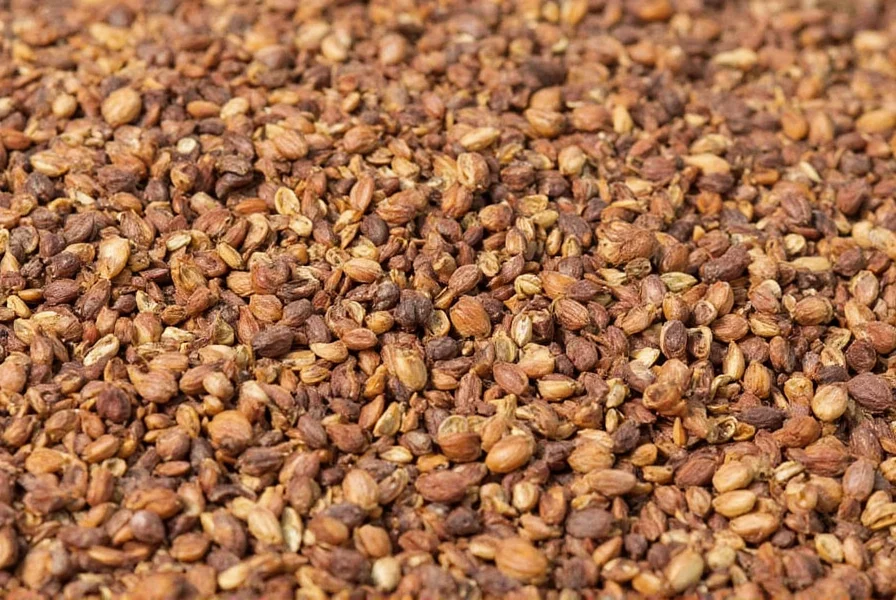Ground anise seed transforms the distinctive flavor of whole anise seeds into a convenient spice form perfect for even distribution in recipes. Unlike star anise (a completely different plant), true anise seed comes from a flowering plant in the parsley family native to the Mediterranean and Southwest Asia. The grinding process releases essential oils containing anethole, the compound responsible for its characteristic licorice taste that's sweeter and more delicate than fennel or star anise.
Understanding Anise Seed's Flavor Profile
Anise seed's unique flavor makes it indispensable in certain culinary traditions. When ground, it delivers:
- Sweetness - Natural sugar compounds create a subtle sweetness without added sugar
- Licorice notes - Distinct anethole flavor, but milder than star anise
- Warm spice - Hints of clove and pepper in the finish
- Floral undertones - Delicate aromatic qualities when freshly ground
The grinding process significantly impacts flavor intensity. Freshly ground anise seed provides approximately 30% more volatile oils than pre-ground versions, explaining why specialty bakers often prefer grinding seeds immediately before use. This difference is particularly noticeable in delicate applications like biscotti or pizzelle where the spice should complement rather than dominate.
Culinary Applications of Ground Anise Seed
Chefs worldwide incorporate ground anise seed across diverse cuisines. Its solubility in fats makes it particularly effective in:
| Cuisine | Signature Dishes | Recommended Quantity |
|---|---|---|
| Mediterranean | Bread, olive oil cakes, lamb stews | 1/4-1/2 tsp per cup of flour |
| Mexican | Mole sauces, hot chocolate, atole | 1/8-1/4 tsp per serving |
| Middle Eastern | Ma'amoul cookies, spice blends | 1/2-1 tsp per batch |
| French | Pain d'épices, cassoulet | 1/4 tsp per recipe |
Professional bakers note that ground anise seed performs best when incorporated early in the mixing process, allowing flavors to meld with other ingredients. For baking applications like how to use ground anise seed in bread recipes, adding it to dry ingredients ensures even distribution. In liquid-based preparations such as anise seed tea benefits, steeping ground seeds for 5-7 minutes extracts maximum flavor without bitterness.
Nutritional Composition and Health Considerations
While primarily used for flavor, ground anise seed offers notable nutritional components per tablespoon (6g):
- Calories: 23
- Fiber: 2.5g (9% of daily value)
- Calcium: 58mg (4% DV)
- Iron: 1.7mg (9% DV)
- Manganese: 0.3mg (13% DV)
Research indicates ground anise seed contains compounds with potential digestive benefits, particularly for relieving bloating and gas. The spice's antispasmodic properties make it a traditional remedy for colic in infants (when properly diluted). However, individuals with estrogen-sensitive conditions should consult healthcare providers before consuming large quantities, as anise contains phytoestrogens. Those with known allergies to plants in the Apiaceae family (carrots, celery, parsley) may experience cross-reactivity with ground anise seed.
Substitution Guidance and Storage Best Practices
When recipes call for ground anise seed but you have alternatives available, consider these substitution ratios:
- Fennel seed - Use 3/4 quantity (milder flavor)
- Star anise - Use 1/2 quantity (stronger, more medicinal taste)
- Anise extract - 1/8 tsp extract per 1/2 tsp ground seed
- Tarragon - 1/3 quantity (herbaceous alternative)
Proper storage significantly impacts ground anise seed shelf life. Exposure to light degrades anethole compounds 40% faster than when stored in darkness. For optimal ground anise seed storage tips, keep in an airtight container away from heat sources. Whole seeds maintain potency for 3-4 years, while ground versions should be used within 12-18 months. Freezing extends shelf life to 24 months with minimal flavor degradation.

Common Questions About Ground Anise Seed
What's the difference between ground anise seed and star anise?
Ground anise seed comes from Pimpinella anisum plants and has a sweeter, more delicate licorice flavor. Star anise is from a completely different plant (Illicium verum), has a stronger, more medicinal taste, and contains shikimic acid used in pharmaceutical production. They are not interchangeable in equal quantities.
Can I substitute ground anise seed for anise extract in recipes?
Yes, but use proper conversion: 1/8 teaspoon anise extract equals approximately 1/2 teaspoon ground anise seed. Extract delivers more concentrated flavor without texture, while ground seed provides subtle texture and more complex flavor notes in baking applications.
Does ground anise seed go bad?
Ground anise seed loses potency over time but doesn't spoil if stored properly. It maintains optimal flavor for 12-18 months in an airtight container away from light and heat. After this period, it becomes less aromatic but remains safe to consume. Check freshness by rubbing a small amount between fingers - fresh ground anise should release a strong, sweet aroma.
Is ground anise seed safe during pregnancy?
In culinary amounts (up to 1/2 teaspoon daily), ground anise seed is generally considered safe during pregnancy. However, medicinal quantities should be avoided as high doses may stimulate uterine contractions. Pregnant women should consult their healthcare provider before using anise seed medicinally or in supplement form.
How does grinding affect anise seed's nutritional value?
Grinding increases bioavailability of certain compounds while exposing others to oxidation. Ground anise seed provides more readily absorbable antioxidants but loses volatile oils faster than whole seeds. The fiber content remains unchanged, but grinding makes it more accessible for digestion. For maximum nutritional benefit, grind seeds immediately before use.











 浙公网安备
33010002000092号
浙公网安备
33010002000092号 浙B2-20120091-4
浙B2-20120091-4